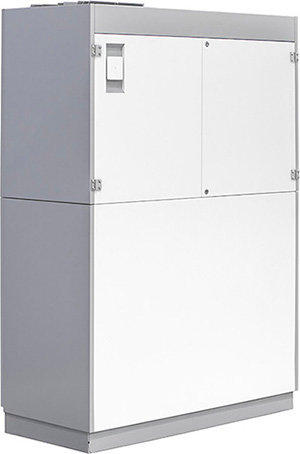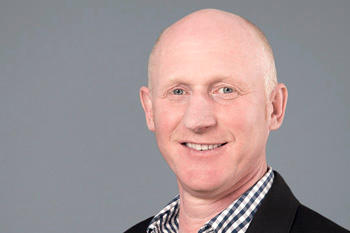Finally funded: stationary air handling units
The current low case numbers are allowing German schools to relax. However, now is precisely the time to equip schools to combat the so-called Delta coronavirus variant. Stationary ventilation units provide effective solutions that can be installed with minimum effort and are now also eligible for funding.
Decentralised ventilation units are especially popular in existing buildings. The Kampmann WZA is just such a unit. It replaces polluted room air with fresh outside air. An integral CO2 sensor in the unit measures the fresh air requirement. This is crucial to reduce any possible viruses and also promote pupils’ ability to concentrate. Too high a CO2 content in room air produces to what is referred to as “muggy air”.
However that is just the basic function of the WZA. Our decentralised school ventilation unit is actually the complete solution for existing buildings. It helps to promote good health by preventing the room air from drying out. The built-in moisture recovery function simultaneously prevents the mucous membranes in children's mouths and noses from drying out, making their organism more resistant to external influences, including viruses.
And the WZA is also sustainable, as it recovers heat and cold as well as moisture.
Minimal structural work
Two core drill holes through the external façade of each classroom are needed to draw in fresh air and discharge polluted air. But as our WZA is also totally plug-in, any work involved is minimal. A pleasing side effect of the unit’s moisture recovery is the fact that no condensate is produced, which then needs to be pumped or drained away. A minor detail, but nonetheless a crucial benefit of our WZA.
Do I still need to ventilate by opening the windows?
Leave the windows closed when using a decentralised ventilation unit, like the Kampmann WZA. Once again here: the unit provides a complete solution. The unit performs the necessary air exchange automatically. The positive side effect is its minimal noise pollution, especially when windows overlooking the street can remain closed.
And how does it differ from air purifiers?
Up to now, we have discussed decentralised ventilation units, which form a sub-group of stationary air handling units. Air purifiers, which are sometimes technically incorrectly referred to as air filters, are often confused.
Air purifiers filter the room air in a certain space. There is no de facto air exchange. Polluted air remains in the room and fresh air is not drawn in. Having said that, air purifiers remove viruses from the air, and indeed do so very effectively. These units, like the Kampmann air purifier KA-520, are immediately ready to use as no core drill holes are needed.
However, regular ventilation through the windows is required when using an air purifier to reduce the concentration of CO2. Should you opt for this short-term solution, we would recommend using a sufficient number of air purifiers, depending on the size of the classroom, combined with a CO2 traffic light indicator to signal when you need to ventilate.
What's the next step?
The most important factor for you is to have a strong advisory partner at your side. I look forward to your call or e-mail enquiry about decentralised school ventilation.
I would be delighted to explain our WZA in detail to you and answer any questions you may have.
|
Frank Heidrich +49 591 7108-115 |





